Full time doctor, part time artist. Comicbook/Sci-Fi superfan. Marvel, DC, Image, Valiant... Star Wars, Star Trek, Dr. Who... and just about anything/everything in between Follow Back 100% Feel free to drop me an 'ask' All original art is for sale
Don't wanna be here? Send us removal request.
Text

Cartoon Heroes Paper Cut-Outs
TaleSpin
Created by Jymn Magon and Mark Zaslove and produced by Disney, TaleSpin is a syndicated adventure cartoon featuring a number of the characters originally introduced in the Disney animated feature, The Jungle Book. Specifically, the goodnatured bear, Baloo, his orangoutang pal, Louie, and the meaning tiger, Shere Khan.
The series centers on the adventures of bush pilot Baloo, whose beleaguered air cargo freight business is taken over by young businesswoman intent on turning it around. The business is renamed ‘Higher for Hire’ and becomes a profitable enterprise running cargo and passages in and out of the harbor city of Cape Suzette. Baloo ends up taking on an adventures orphan named Kit to act as his navigator and the two form a close father/son bond. The two are the main crew of Higher for Hire's sole aircraft, a modified Conwing L-16 called the Sea Duck.
The series follows the ups and downs of Higher for Hire and their various misadventures. Among the many perils the Sea Duck must traverse include a band of air pirates led by the dashing Don Karnage, as well as Khan Enterprises’ wealthy owner, Shere Khan, who is intent on running Higher for Hire out of business.
The voice cast for TaleSpin included Ed Gilbert, R. J. Williams, Sally Struthers, Janna Michaels, Jim Cummings, Tony Jay, Lorenzo Music and Frank Welker. The series premiered in September of 1990 and included 65 episodes.
27 notes
·
View notes
Text







Cartoon Heroes Paper Cut-Outs
Dungeons & Dragons
An animated series based on the TSR role-playing game, Dungeons & Dragons was a co-production of Marvel Studios, TSR and Toei Animation. The plot focuses on a group of young friends who find themselves magically transported to the realm of Dungeons & Dragons. Upon arriving in this strange land, the kids meet the mysterious and powerful Dungeon Master (voiced by Sidney Miller) who bestows each of them a magical item granting powers and abilities in concert with specific D&D character classes.
Hank (voiced by Willie Aames) is made a Ranger and provided a magical bow that fires an endless supply of fiery arrows. Diana (voiced by Tonia Gayle Smith) is made an Acrobat and offered a retracting quarterstaff that can change size to meet a given need. Eric (voiced by Don Most) is made a Cavalier and gifted the Griffen Shield which can generate force fields. Presto (voiced by Adam Rich) is made a Wizard and equipped with a magic hat that can produce all manner of useful objects. Sheila (voiced by Katie Leigh) is made a Thief and provided a Cloak of Invisibility. And finally Sheila’s younger brother, Bobby (voiced by Ted Field III), is made a Barbarian and granted a powerful club. The group is also befriended by a juvenile unicorn named Uni (performed by Frank Welker).
These protagonists’ main goal is to find a way home, yet they often take detours to help people and have adventures. The group comes across many different enemies, but their primary antagonist is Venger (voiced by Peter Cullen), a powerful and sinister mage who wishes to rule the realm.

Following numerous adventures, the series ended on a cliffhanger where the six heroes were faced with the choice of returning home or remaining in the realm to deal with the evils that still existed there. Their choice in the matter remains yet to be told; although it can be assumed that they opted to remain in that the heroes made a brief cameo in the live action movie, Dungeons and Dragons: Honor Amongst Thieves.
The Saturday morning series premiered in September of 1983. It ran for three seasons
13 notes
·
View notes
Text







f*yeah, Catman!
22 notes
·
View notes
Text



Cartoon Heroes Paper Cut-Outs
Pinky & The Brain
Created by Tom Ruegger, Pinky and the Brain first appeared as a recurring segment in Animaniacs. The segment was quite popular and ended up spun off into its own animated series. The story centers on two lab mice who have been genetically engineered by the cruel scientists at Acme Labs.
Pinky is good-natured but feeble-minded, while The Brain is highly intelligent but arrogant and bitter. In each episode, The Brain devises a new plan to take over the world which ultimately ends in failure; usually due to the impossibility of The Brain's plan, The Brain's own overconfidence, Pinky's bumbling, an oversight on The Brain's part, circumstances beyond their control, or a combination thereof.
His dreams of conquest notwithstanding, The Brain is not truly altogether evil villain. He does not want to take over the world simply to be a cruel dictator but rather believes he would be a much more effective ruler due to his superior intelligence. Indeed he actually is shown to be a good leader when not focused on world domination, as he stands up to cruelty and easily inspires others.
Actors Rob Paulsen and Maurice LaMarche provide the voices for Pinky and The Brain respectively. The pair first appeared int he debut episode of Animaniacs in September of 1993; their own series premiered in September of 1995 and ran for four seasons. A brief relaunch, entitled ‘Pinky, Elmyra & the Brain,’ aired in 1998.
35 notes
·
View notes
Note
you know that show with the autistic doctor. do you think that was a good enough representation.
hm. If you're referring to The Pitt then in my opinion the answer is yes; if you're referring to The Good Doctor then my answer is no.
9 notes
·
View notes
Text

Cartoon Heroes Paper Cut-Outs
TaleSpin
Created by Jymn Magon and Mark Zaslove and produced by Disney, TaleSpin is a syndicated adventure cartoon featuring a number of the characters originally introduced in the Disney animated feature, The Jungle Book. Specifically, the goodnatured bear, Baloo, his orangoutang pal, Louie, and the meaning tiger, Shere Khan.
The series centers on the adventures of bush pilot Baloo, whose beleaguered air cargo freight business is taken over by young businesswoman intent on turning it around. The business is renamed ‘Higher for Hire’ and becomes a profitable enterprise running cargo and passages in and out of the harbor city of Cape Suzette. Baloo ends up taking on an adventures orphan named Kit to act as his navigator and the two form a close father/son bond. The two are the main crew of Higher for Hire's sole aircraft, a modified Conwing L-16 called the Sea Duck.
The series follows the ups and downs of Higher for Hire and their various misadventures. Among the many perils the Sea Duck must traverse include a band of air pirates led by the dashing Don Karnage, as well as Khan Enterprises’ wealthy owner, Shere Khan, who is intent on running Higher for Hire out of business.
The voice cast for TaleSpin included Ed Gilbert, R. J. Williams, Sally Struthers, Janna Michaels, Jim Cummings, Tony Jay, Lorenzo Music and Frank Welker. The series premiered in September of 1990 and included 65 episodes.
27 notes
·
View notes
Text

Cartoon Heroes Paper Cut-Outs
Andy Panda
Created by Walter Lantz and Alex Lovy, Andy Panda feature in a series of animated films produced for Universal Pictures. Debuting in the 1939 short ‘Life Begins for Andy Panda’ (a play on the then popular Andy Hardy film Life Begins for Andy Hardy) the short introduced the panda as a cute and mischievous little fella who was always pulling pranks on his irascible father, Papa Panda.
Lantz had previously produced Oswald the Lucky Rabbit shorts. When these cartoons began to lose its audience, Lantz and Lovy created a host of new characters, hoping one would resonant with filmgoers. After a few misfires, the two came up with Andy and he proved quite popular. The 1940 Andy Panda short ‘Knock Knock’ featured the first appearance of Woody Woodpecker.
By 1942, Andy Panda started wearing clothes and shoes in ‘Nutty Pine Cabin.’ The character was then given a major overhaul by director Shamus Culhane for the 1944 short ‘The Painter and the Pointer.’ This new version of the character presented him as angry and mean. Lantz hated it and had Andy return to his previous personality in subsequent iterations.
A host of different vice actors provided the dialogue for Andy. Actress Sara Berner was the original voice of the character, followed by Margaret Hill-Talbot, Walter Tetley, Mel Blanc, Daws Butler and Scott Weil.
Many of the Andy Panda shorts, along with some new material, were repackaged and broadcast as part of the Saturday morning cartoons series, The Woody Woodpecker Show.
12 notes
·
View notes
Note
Are you planning on doing characters from this? https://youtu.be/oLfZcB2oFMY?si=I5Dcir4GaB_MtBI1
Vytor: Starfire Champion!
I must admit that I wasn't aware of this one and am looking forward to checking it out. Looks like it has some awesome 1980s fashion going on :)

Thanks for pointing it out to me. I'll be sure to get an entry for this show squeezed in somewhere.
5 notes
·
View notes
Note
Thank you for your thoughts on these cartoons. I enjoyed Fritz the Cat very much. I watched the sequel because im a completionist. I would like that hour of my life back. The sequel is garbage. As offensive as Fritz is there was a moment when a Jewish female college student talks at a black man telling him how she relates to his struggle against racism. My friend pointed out that that conversation is happening on College campuses today. Which makes me happy in a way. People are just waking up to these big concepts every day.
In regards to offensive cartoons in general. I was surprised as a kid to find a warning on a DVD of Tom and Jerry. They filmed a thing with Whoopi Goldberg saying how they shouldn't censor the "mammy" character and act like she wasn't there. I was shocked cuz growing up I assumed that woman owned that house. I thought she was just dressed to clean it while her husband was at work or something. But thanks to Whoopi im less ignorant.
very cool. Thanks for pointing this out. I'm aware of Mammy Two-Shoes and was very intrigued by Goldberg's exploration into the character and Lillian Randolph's terrific performance. I'm in complete agreement with Whoopi's take on this matter and really appreciated what she had to say.
youtube
4 notes
·
View notes
Text



Cartoon Heroes Paper Cut-Outs
Pinky & The Brain
Created by Tom Ruegger, Pinky and the Brain first appeared as a recurring segment in Animaniacs. The segment was quite popular and ended up spun off into its own animated series. The story centers on two lab mice who have been genetically engineered by the cruel scientists at Acme Labs.
Pinky is good-natured but feeble-minded, while The Brain is highly intelligent but arrogant and bitter. In each episode, The Brain devises a new plan to take over the world which ultimately ends in failure; usually due to the impossibility of The Brain's plan, The Brain's own overconfidence, Pinky's bumbling, an oversight on The Brain's part, circumstances beyond their control, or a combination thereof.
His dreams of conquest notwithstanding, The Brain is not truly altogether evil villain. He does not want to take over the world simply to be a cruel dictator but rather believes he would be a much more effective ruler due to his superior intelligence. Indeed he actually is shown to be a good leader when not focused on world domination, as he stands up to cruelty and easily inspires others.
Actors Rob Paulsen and Maurice LaMarche provide the voices for Pinky and The Brain respectively. The pair first appeared int he debut episode of Animaniacs in September of 1993; their own series premiered in September of 1995 and ran for four seasons. A brief relaunch, entitled ‘Pinky, Elmyra & the Brain,’ aired in 1998.
35 notes
·
View notes
Text

Cartoon Heroes Paper Cut-Outs
The Care Bears
Originally based on characters created by Universal Greetings, the Care Bears are magical creatures who live in a faraway place up in the clouds called Care-A-Lot, which constitutes a part of the Kingdom of Caring. Often with the help of human allies, The Care Bears go all around the world on Missions of Caring whilst they try to thwart the plans of the evil Professor Coldheart.
The characters first appeared in the animated musical film, The Care Bears Movie; debuting in 1985 from the Canadian animation studio Nelvana. The success of the movie led to an animated series produced by DIC Enterprises.
18 notes
·
View notes
Text

Cartoon Heroes Paper Cut-Outs
Andy Panda
Created by Walter Lantz and Alex Lovy, Andy Panda feature in a series of animated films produced for Universal Pictures. Debuting in the 1939 short ‘Life Begins for Andy Panda’ (a play on the then popular Andy Hardy film Life Begins for Andy Hardy) the short introduced the panda as a cute and mischievous little fella who was always pulling pranks on his irascible father, Papa Panda.
Lantz had previously produced Oswald the Lucky Rabbit shorts. When these cartoons began to lose its audience, Lantz and Lovy created a host of new characters, hoping one would resonant with filmgoers. After a few misfires, the two came up with Andy and he proved quite popular. The 1940 Andy Panda short ‘Knock Knock’ featured the first appearance of Woody Woodpecker.
By 1942, Andy Panda started wearing clothes and shoes in ‘Nutty Pine Cabin.’ The character was then given a major overhaul by director Shamus Culhane for the 1944 short ‘The Painter and the Pointer.’ This new version of the character presented him as angry and mean. Lantz hated it and had Andy return to his previous personality in subsequent iterations.
A host of different vice actors provided the dialogue for Andy. Actress Sara Berner was the original voice of the character, followed by Margaret Hill-Talbot, Walter Tetley, Mel Blanc, Daws Butler and Scott Weil.
Many of the Andy Panda shorts, along with some new material, were repackaged and broadcast as part of the Saturday morning cartoons series, The Woody Woodpecker Show.
12 notes
·
View notes
Text








Good night Terrance Stamp… rest in peace
150 notes
·
View notes
Text

Cartoon Heroes Paper Cut-Outs
Solar Opposites
Created by Justin Roiland and Mike McMahan, Solar Opposites is an animated situation comedy focusing on a family of alien refugees who find themselves stranded on Earth. Korvo, Terry, Jesse, and Yumyulack have crash land on Earth and are forced to stay there, often disagreeing on whether or not this is a good thing.
The family heralds from the planet Shlorp, an advanced alien world that sent out one hundred ships (each carrying 2 adults and their replicants) to colonize new planets shortly before the planet was destroyed by an asteroid.
The aliens have an ambivalent relationship with their new home. They love many aspects of human society, while hating others. Korvo and his replicant Jesse are keen on conquering and terraforming the earth, whereas Terry and his replicant Yumyulack are more inclined to assimilate to earthly culture.
Shlorplians are sexless and reproduce through replication. Whilst adjusting to human culture, Korvo, Terry and Jesse assume a male gender while Yumyulack assumes a female gender.
Justin Roiland voiced Korvo in the first three seasons, but was replaced by actor Dan Stevens after Roiland was fired. Actors Thomas Middleditch, Sean Giambrone and Mary Mack voice Terry, Jesse and Yumyulack respectively. Solar Opposites premiered in May and 2020 and has run for six seasons.
16 notes
·
View notes
Text
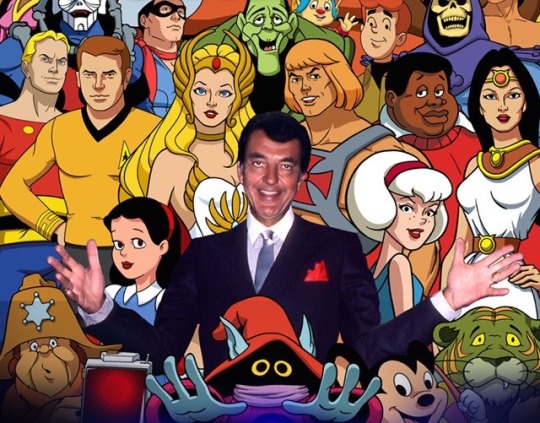
The Folks behind the Toons
Louis Scheimer
Born on October 19, 1928 in Pittsburgh, Pennsylvania, Louis Scheimer was a producer, voice actor and helped to found the Filmation animation studio. Scheimer grew up in Pittsburgh the son of Jewish immigrants from Germany. The family lore is that his father had to flee Germany in the early 1920's after he had punched his classmate, a young Adolf Hitler.
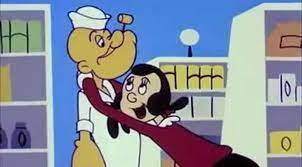
Following an education at Carnegie Mellon University, Scheimer landed a job at Larry Harmon Pictures. He was promoted to art director and worked on television cartoons of Popeye the Sailor and Bozo the Clown. Herein he became friends with former Disney animator, Hal Sutherland. After Harmon Pictures shuttered, Scheimer, Sutherland and former radio disc-jockey, Norm Prescott, formed their own studio calling it ‘Filmation.’ One of the studio's first projects was ‘The Journey Back to Oz,’ an animated sequel to The Wizard of Oz.

Filmation cultivated a number of means of reducing costs in creating animation. This included limiting the number of frames per second, re-using animated sequences, and rotoscoping (where animators trace over motion picture footage, frame by frame, to produce realistic action). These techniques sometimes diminished the quality of a number of the productions, yet did enable the fledgling studio to compete in a saturated market. Filmations’ low-ball pitches helped the studio secure a deal with DC Comics to produce a Superman animated series. The studio also produced an animated adaptation of Star Trek, along with cartoons based on Archie, Flash Gordon and Tarzan. For the higher profile projects like Star Trek and Archie, Filmation made concerted efforts to create higher quality productions.

Filmation was purchased by the Westinghouse Corporation in 1969. The studio continued to make content but Scheimer, Sutherland and Prescott were no longer in the driver’s seat.
In 1972, Scheimer teamed up with comedian Bill Cosby to produce an educational cartoon series featuring an exclusively Black cast of characters. They initially had trouble getting a network to bite on the project, but CBS ultimately took a chance and Fat Albert and the Cosby Kids would go on to become Filmation’s biggest hit and a landmark animated series.
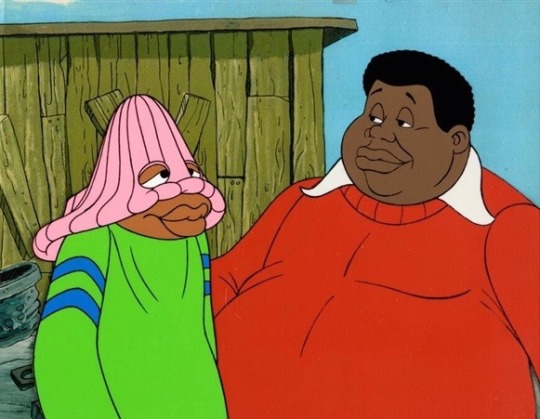
Along with co-producing Fat Albert, Scheimer additionally acted as part of the cast, voicing the characters of Dumb Donald and Legal Eagle. Scheimer would go on to provide voice work for numerous other animation projects throughout his career.
Additional cartoon produced by Filmation included The Adventures of Batman, The Hardy Boys, Sabrina and the Groovie Goolies, Lassie's Rescue Rangers, The New Adventures of Mighty Mouse, BlackStar, Ghostbuster and many others. The studio also ventured into live action programing with such shows as Shazam, Isis and the mixed live-action/cartoon series, The Adventures of Waldo Kitty.
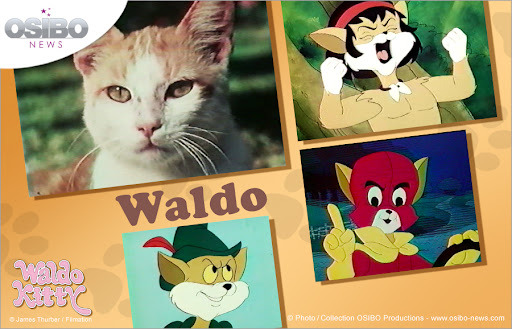
In 1980, Filmation partnered with Mattel Toys and produced He-Man and the Masters of The Universe. It proved to be one of the most popular animated shows of the 1980s and led to the sequel series, She-Ra: Princess of Power. Scheimer voiced Orko in He-Man as well as Grizzlor in She-Ra.

Filiation and Mattel later tried to replicate the success of He-Man/She-Ra with a show called Bravestarr that was also released in conjunction with a toy-line. Unfortunately, production delays and a lukewarm response to both the toys and the cartoon caused the project to bomb. The Filmation feature animated film, Happily Ever After, was also a financial disappointment and accrued significant legal bills in a lawsuit from Disney. All this led to Westinghouse shutting Filmation down in 1989 and selling its library to Paravision International.

Louis Scheimer went into semi-retirement, providing periodic consultation services to Gang of Seven Animation and Dreamweavers Studios. He was married to Joanne Wucher until her death in 2009. He passed away from complication from Parkinson’s Disease in 2013 at the age of 84. He is survived by two children.
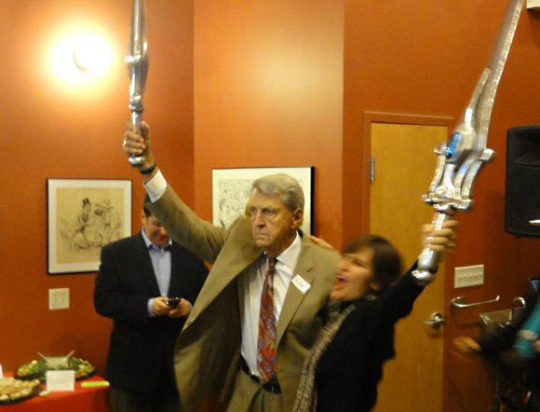
39 notes
·
View notes
Text

The Folks behind the Toons
Tex Avery
Frederick Bean "Tex" Avery was born February 26, 1908, in Taylor, Texas. Following a short stint at the Art Institute of Chicago, Avery headed out to Los Angeles where he got his start in the animation business as an inker, working on cels for animated short films in the Oswald the Lucky Rabbit series. Soon he was promoted to an assistant to director Bill Nolan. Avery finagled his way into Warner Brothers pretending to have much more experience as a director than he actually did.

Avery was assigned to work primarily on the black-and-white Looney Tunes instead of the Technicolor Merrie Melodies, but was allowed to make color Merrie Melodies beginning with Page Miss Glory from 1936. Later that year he directed Porky the Rainmaker which stared a new version of Porky Pig that Avery designed. This was followed by Porky's Duck Hunt in 1937, which introduced the character of Daffy Duck, who possessed a new form of zaniness that had not been seen before in animated cartoons. Daffy was an almost completely crazy, bounding about the film frame in double-speed, yammering nonsensically in a high-pitched, sped-up voice provided by actor Mel Blanc.

The madcap style of Avery’s direction was a significant departure from much of what was being done in animation. Many of the cartoons were slower, more gentle and similar to those produced at Walt Disney Studios. Although initially thought of as low-brow and overly silly, Avery's style was a hit with audiences and he went on to direct dozens of subsequent cartoons, introducing many characters who would become staples in Warner Brothers’ catalog, including Elmer Fudd, Cecil Turtle and Willoughby the Dog. He additionally came up with Bugs Bunny’s trademark phrase eh, what’s up, doc?’ which was how Tex greeted his friends throughout his childhood and teenage years.

In 1941, Avery left Warners and signed with Metro-Goldwyn-Mayer, where he formed his own animation unit and directed shorts in Technicolor that were produced by Fred Quimby. Avery’s work at MGM led to the creation of many new characters, such as Droopy Dog, Screwy Squirrel, a new iteration of the Big Bad Wolf and of course Red Hot Riding Hood (hubba hubba) .

During his time at MGM, Avery became friends with fellow animators, William Hanna and Joseph Barbera. Hanna and Barbera would borrow some of Avery’s madcap schtick in crafting their break-out hit, Tom and Jerry.

Avery left MGM and went to work for Walter Lantz Productions in 1954. Here he created Chilly Willy and directed numerous toons featuring the penguin. His 1955 short, Crazy Mixed Up Pup, along with he Chilly Willy short The Legend of Rockabye Point were both nominated for an Academy Award.

Avery went into semi retirement following the death of his son from a heroin overdose. The tragedy contributed to the break up of Avery’s marriage to Patricia Johnson and led to a prolonged depression. He returned to the industry briefly, working for his old friends Hanna and Barbera where he wrote gags for Saturday morning cartoons such as Fred and Barney Meet the Thing and Kwicky Koala.

Avery passed away from lung cancer in 1980. He is buried in Forest Lawn Memorial Park, Hollywood Hills, in a grave next to his son. Avery’s signature style of breakneck pacing, nutty sight gags, exaggerated expressions and fourth-wall breaking bits would become incorporated into many of the other cartoons continuing to this day. Avery’s influence is especially evident in such projects as The Ren and Stimpy Show, Who Framed Roger Rabbit, The Mask, SpongeBob SquarePants, and many others.

51 notes
·
View notes
